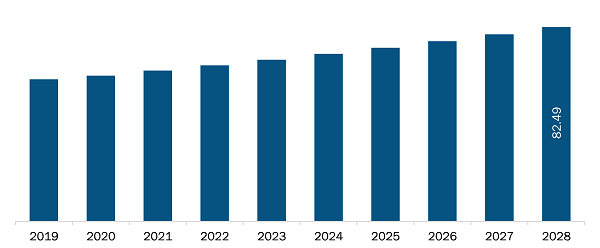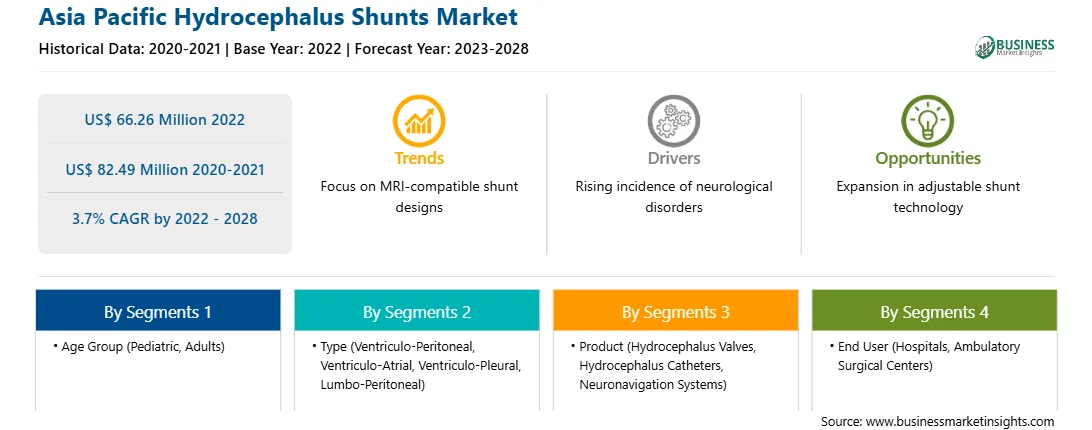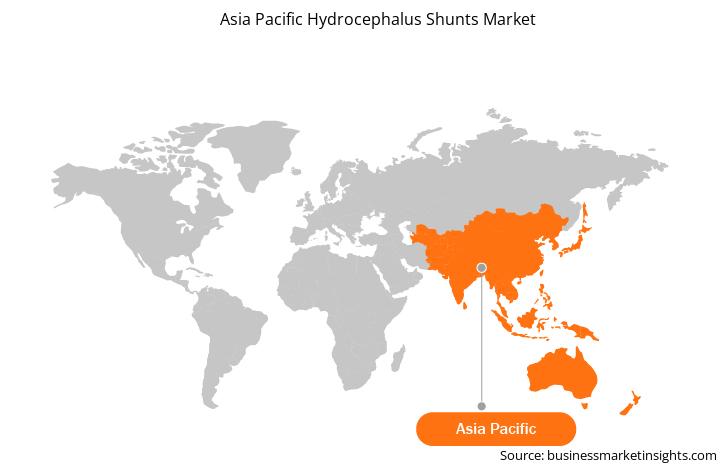Companies in the hydrocephalus shunts market are implementing strategies such as joint ventures to enlarge their market shares. Investments in R&D allow them to develop advanced technologies and gain more revenues. For example, the Institute for Dynamic Systems and Control, and the Interface Group of the Institute of Physiology at the University of Zurich are jointly working on "SmartShunt - The Hydrocephalus Project" for the development of a smart CSF shunt for normal pressure hydrocephalus. Moreover, in 2020, Aesculap, Inc., in partnership with Christoph Miethke GmbH & Co. KG, announced the launch of the M.blue valve, the latest generation of their hydrocephalus valve technology. Many organizations are focused on developing smart shunts to provide advanced control, diagnosis, and communications with the use of implanted sensors, telemetry components, and feedback control systems. Thus, strategies such as collaborations and research alliances among key players are expected to contribute to the Asia Pacific hydrocephalus shunt market growth during the forecast period.
The Asia Pacific hydrocephalus shunts market is sub segmented into China, Japan, India, Australia, South Korea, and the Rest of Asia Pacific. The increasing prevalence of hydrocephalus in the region is a major factor contributing to the growth of the Asia Pacific hydrocephalus shunt market.

Strategic insights for the Asia Pacific Hydrocephalus Shunts provides data-driven analysis of the industry landscape, including current trends, key players, and regional nuances. These insights offer actionable recommendations, enabling readers to differentiate themselves from competitors by identifying untapped segments or developing unique value propositions. Leveraging data analytics, these insights help industry players anticipate the market shifts, whether investors, manufacturers, or other stakeholders. A future-oriented perspective is essential, helping stakeholders anticipate market shifts and position themselves for long-term success in this dynamic region. Ultimately, effective strategic insights empower readers to make informed decisions that drive profitability and achieve their business objectives within the market.

| Report Attribute | Details |
|---|---|
| Market size in 2022 | US$ 66.26 Million |
| Market Size by 2028 | US$ 82.49 Million |
| Global CAGR (2022 - 2028) | 3.7% |
| Historical Data | 2020-2021 |
| Forecast period | 2023-2028 |
| Segments Covered |
By Age Group
|
| Regions and Countries Covered | Asia-Pacific
|
| Market leaders and key company profiles |
The geographic scope of the Asia Pacific Hydrocephalus Shunts refers to the specific areas in which a business operates and competes. Understanding local distinctions, such as diverse consumer preferences (e.g., demand for specific plug types or battery backup durations), varying economic conditions, and regulatory environments, is crucial for tailoring strategies to specific markets. Businesses can expand their reach by identifying underserved areas or adapting their offerings to meet local demands. A clear market focus allows for more effective resource allocation, targeted marketing campaigns, and better positioning against local competitors, ultimately driving growth in those targeted areas.

The Asia Pacific hydrocephalus shunts market is segmented into age group, type, product, end user and country.
Based on age group, the Asia Pacific hydrocephalus shunts market is segmented into pediatric, and adults. The pediatric segment held the larger market share in 2022.
Based on type, the Asia Pacific hydrocephalus shunts market is segmented into ventriculo-peritoneal, ventriculo-atrial, ventriculo-pleural, and lumbo-peritonea. The ventriculo-peritoneal segment held the largest market share in 2022.
Based on product, the Asia Pacific hydrocephalus shunts market is segmented into hydrocephalus valves, hydrocephalus catheters, neuronavigation systems, and others. The hydrocephalus valves segment dominated the market share in 2022.
Based on end user, the Asia Pacific hydrocephalus shunts market is segmented into hospitals, ambulatory surgical centers, others. The hospital segment dominated the market share in 2022.
Based on country, the Asia Pacific hydrocephalus shunts market is segmented into China, India, Japan, Australia, South Korea, and the Rest of Asia-Pacific. The China dominated the market share in 2022.
B. Braun Melsungen AG (CHRISTOPH MIETHKE GMBH & CO. KG); HpBio Próteses, inc.; Integra LifeSciences Holdings Corporation; KANEKA MEDIX CORP.; Medtronic; Natus Medical Incorporated; and Spiegelberg GmbH & Co. KG. are the leading companies operating in the Asia Pacific hydrocephalus shunts market.
The Asia Pacific Hydrocephalus Shunts Market is valued at US$ 66.26 Million in 2022, it is projected to reach US$ 82.49 Million by 2028.
As per our report Asia Pacific Hydrocephalus Shunts Market, the market size is valued at US$ 66.26 Million in 2022, projecting it to reach US$ 82.49 Million by 2028. This translates to a CAGR of approximately 3.7% during the forecast period.
The Asia Pacific Hydrocephalus Shunts Market report typically cover these key segments-
The historic period, base year, and forecast period can vary slightly depending on the specific market research report. However, for the Asia Pacific Hydrocephalus Shunts Market report:
The Asia Pacific Hydrocephalus Shunts Market is populated by several key players, each contributing to its growth and innovation. Some of the major players include:
The Asia Pacific Hydrocephalus Shunts Market report is valuable for diverse stakeholders, including:
Essentially, anyone involved in or considering involvement in the Asia Pacific Hydrocephalus Shunts Market value chain can benefit from the information contained in a comprehensive market report.